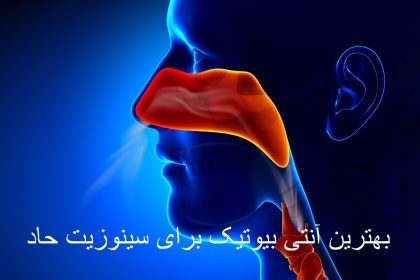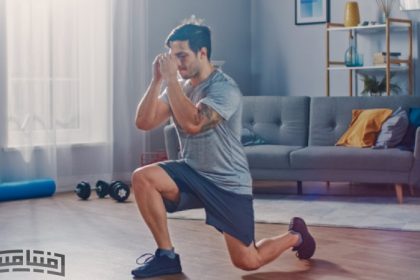Contrast training system, as the name suggests, includes two different types of training. We have always said that the best training program is a program that combines strength and aerobic exercises. Opposite exercises follow exactly this rule. Read this article to the end to get to know the contrast training and its types and benefits!
What are contrast exercises?
Contrast exercises or in English contrast training A training method or system that involves performing a strength exercise followed by a similar plyometric movement. In simpler terms, you perform a strength exercise (such as the chest press) and immediately perform a plyometric exercise with the same muscle group (such as swedish swimming). The first exercise should be strength and the second should be jumping.
This training method increases the power and explosive power of the muscle. In this training system, you perform two strength exercises and jumping focused on one muscle group alternately to increase the strength, power, endurance and explosive power of your muscles.
Although this may seem like a simple task, it is not! You are not going to do a few squats and then jump on the box; Or throw a medicine ball and think you're doing the opposite. This exercise requires careful planning for the number of repetitions, the number of sets, the rest time and even the weight of the weights in both strength training and plyometric training.

Why is contrast training good? What are the benefits of bodybuilding?
Doing this style of training in a short period of time will cause a significant and almost immediate increase in strength, speed, jump height and strengthening of your upper body. More importantly, resistance training can dramatically increase an athlete's strength and performance; Because the muscles and the nervous system find new capabilities and will get used to these capabilities. We will discuss the benefits of contrast training in detail below.
1. Dramatic increase in power and performance
Contrast training is almost unparalleled in the growth it produces in an athlete's power, speed, jump height, and upper body strength. For example, a 10-week study of adolescent basketball players found that adolescents who did contrast training improved their sprinting acceleration and top speed by approximately 0.2 and 0.3 seconds (9% and 6%), respectively. At the same time, they increased their jump height by at least 5 inches, which is a good result for this period of time.
Many other studies show similar results, which emphasize the excellent effects of contrast training on increasing the strength and performance of athletes.
2. Increase muscle strength
Contrast exercises significantly develop and increase muscle strength, and the reason is that the motor units related to explosive power, which are stimulated and strengthened during these exercises, are the same motor units that are responsible for producing maximum muscle strength and power. In simpler words, you develop the speed and strength of your muscles with simultaneous opposite exercises.
3. Helping to grow muscles (volume)
When you include resistance training regularly in your program, type II fast-twitch muscle fibers are activated, which have a greater potential for growth than type I fibers. Over time, these muscle fibers will grow more and as a result you will gain more volume.


4. Time efficient
For athletes who do strength training regularly, resistance training is very time-efficient; Because it combines strength and explosive power, it allows you to train more in less time and have more time for your other exercises.
What is the best counter exercise?
Any training program that is structured in a contrasting manner can be one of the best. In the following, we will give you several examples that you can use in consultation with your trainer to increase the strength and power of your muscles or the explosive power of your muscles.
A program can be effective and useful for you that is adjusted based on your physical condition and goal. Consult with vitamin trainers to get your own training plan.
Squat and jump on the box (or step)
The combination of squats and box jumps is one of the most classic and best examples of resistance training, and there's a good reason for it: it increases the power and strength of the lower body muscles. You can perform the squat in any of these ways:
- Squat with dumbbells from the front
- Squat from behind
- Goblet Scott
Deadlift and long jump
The special importance of the opposite exercise of deadlift and long jump is that it requires more effort from the hip extensor muscles and puts more emphasis on the posterior chain (i.e. hips and hamstrings). As a result, deadlifts and similar movements are extremely valuable when combined with wide, concentrated jumps.
You can perform the deadlift as a simple deadlift with no equipment, or with a barbell, or a Romanian deadlift and then long jump after doing your number of sets. Jumping can also be simple from one point to another or down from a box.


Chest press and Swedish swimming
Combining the chest press or similar movements with swedish swimming is a great example of contrast training and has a great result: increased explosive power. You can use barbell bench press or floor press for chest press.
Throwing the medicine ball above the head and barfix to the chin
When you combine a heavy strength movement like the chin-up barfix with a throwing and accelerating movement like the medicine ball throw, the upper back muscles and shoulder stabilizers are well strengthened.
How many times a week should you do contrast training?
Despite all the benefits of contrast training, keep in mind that contrast training is very stressful on the nervous system, so it should not be done more than twice a week (with two days of rest between training sessions). Doing more of this system can cause fatigue.
Using this type of exercise once every five days or just once a week is probably the best method.
How do I have a contrast training session?
To do a resistance training session, you should proceed in the following order to have a successful and effective workout:
- HeatFirst, start with an active warm-up to warm up the muscles to be trained.
- Heavy strength training: Choose a compound strength exercise such as barbell squats, deadlifts or bench presses. Perform 3-5 repetitions with a heavy weight.
- Plyometric exercise1-2 minutes after completing your heavy strength training set, switch to an explosive workout that targets the same muscle groups or uses a similar movement pattern. For example, after the squat, you can use the jump on the box, which we mentioned above. Do 6-10 repetitions focusing on explosive movements. Rest for 2-3 minutes and then go back to your heavy strength training. Do a total of 3-5 combined sets.
- Amount of rest between exercises: After completing the initial set, have a short rest of 3-4 minutes.
Important note: Try not to do more than 3 opposite exercises in each session. Contrast training is an aggressive and hard training style and requires a lot of recovery.
final word
Contrast training style or system is a combination of strength training and plyometrics. Contrast training has a great effect on increasing the strength and performance of athletes. If you have a proper program, you will feel the effect of opposite exercises in a short time.
References: stack – menshealth
RCO NEWS
RCO
















